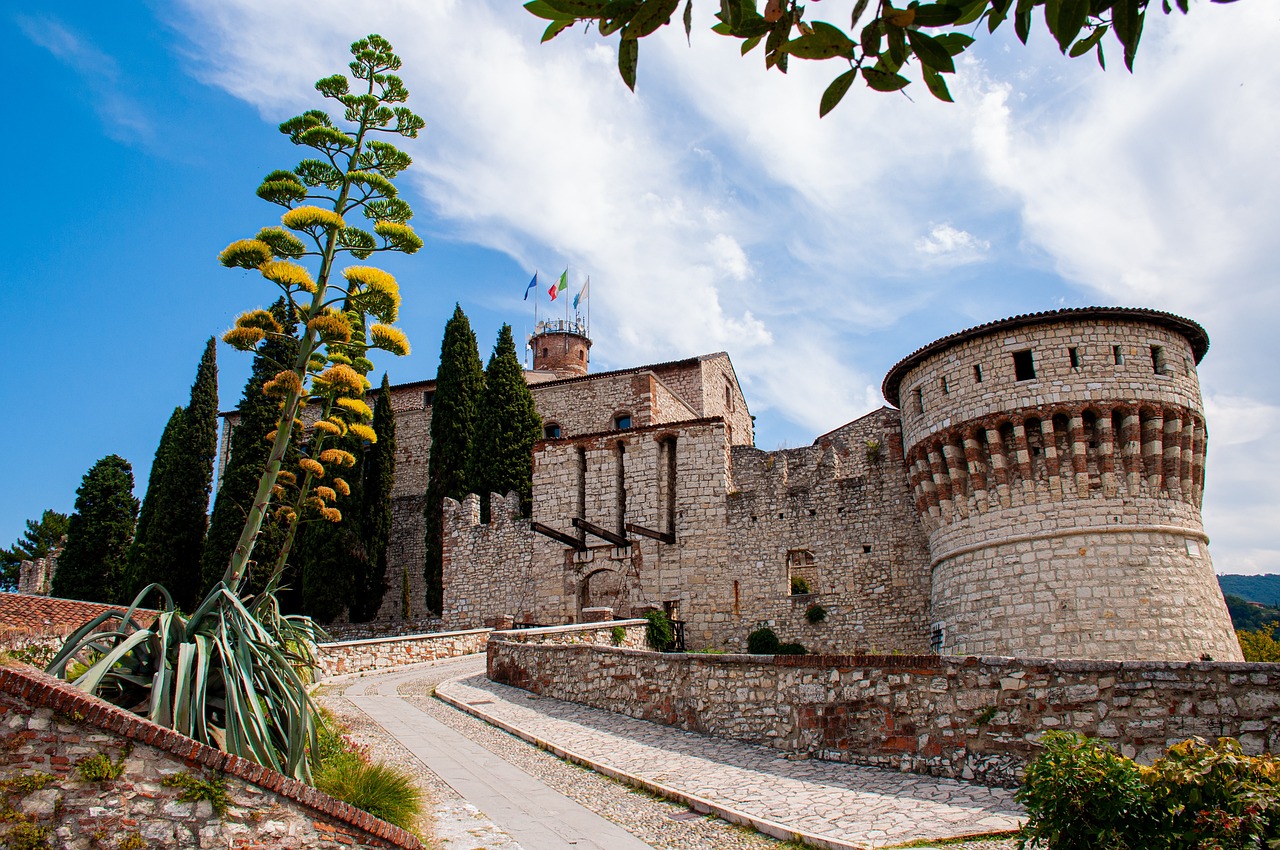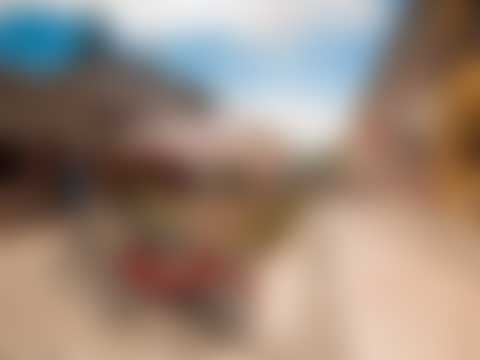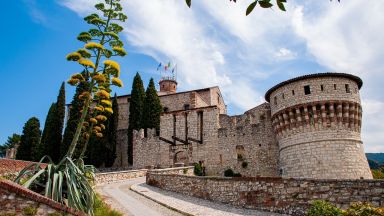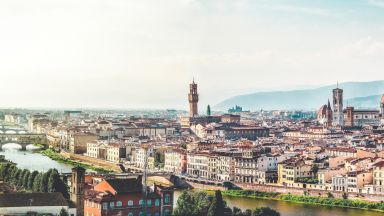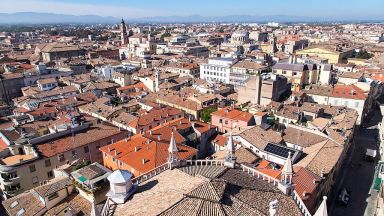On the eastern part of the square, we can also find the New Cathedral of Brescia (Duomo Nuovo), built between 1604 and 1825 (it took a while to build due to due to financial difficulties), in various architectural styles ranging from late Baroque to Rococo. It was designed by architect Giovanbattista Lantana and built on the remains of the old San Pietro de Dom church. It has a splendid Baroque façade in Botticino marble and it’s dome is the third tallest in Italy.
The Duomo Nuovo has eight chapels, although these are really no more than niches. The interior, a one-nave Greek cross design, is very monumental and contains several noteworthy works of art. Look out for the 15th century wooden crucifix on the first altar on the right; Isaac’s Sacrifice painted by Moretto in the lunette of the same altar; and St. Apollonio’s sarcophagus in the third altar (he was Bishop of Brescia in the 3rd century), made in 1510 and decorated with high-reliefs attributed to Maffeo Olivieri. In the Trinity Chapel, the altarpiece by Giuseppe Nuvolone is noteworthy; it’s a grandiose ex voto to celebrate the end of the plague in 1630.
The next structure is the Old Cathedral (Duomo Vecchio), known also as La Rotonda, an example of Romanesque architecture from the 11th century. Duomo Vecchio was built starting from 1100 by a very old Corporation of specialised masons. Also called “Rotunda” for its circular shape, it is the official co-cathedral of Brescia together with Duomo Nuovo.
Location: Cathedral of Santa Maria Assunta, Duomo Nuovo, Piazza Paolo VI, Brescia, Province of Brescia, Italy | Hours: 7.30am-noon & 4-7pm Mon-Sat, 8am-1pm & 4-7pm Sun
Read more about Duomo Nuovo (New Cathedral) and Rotonda